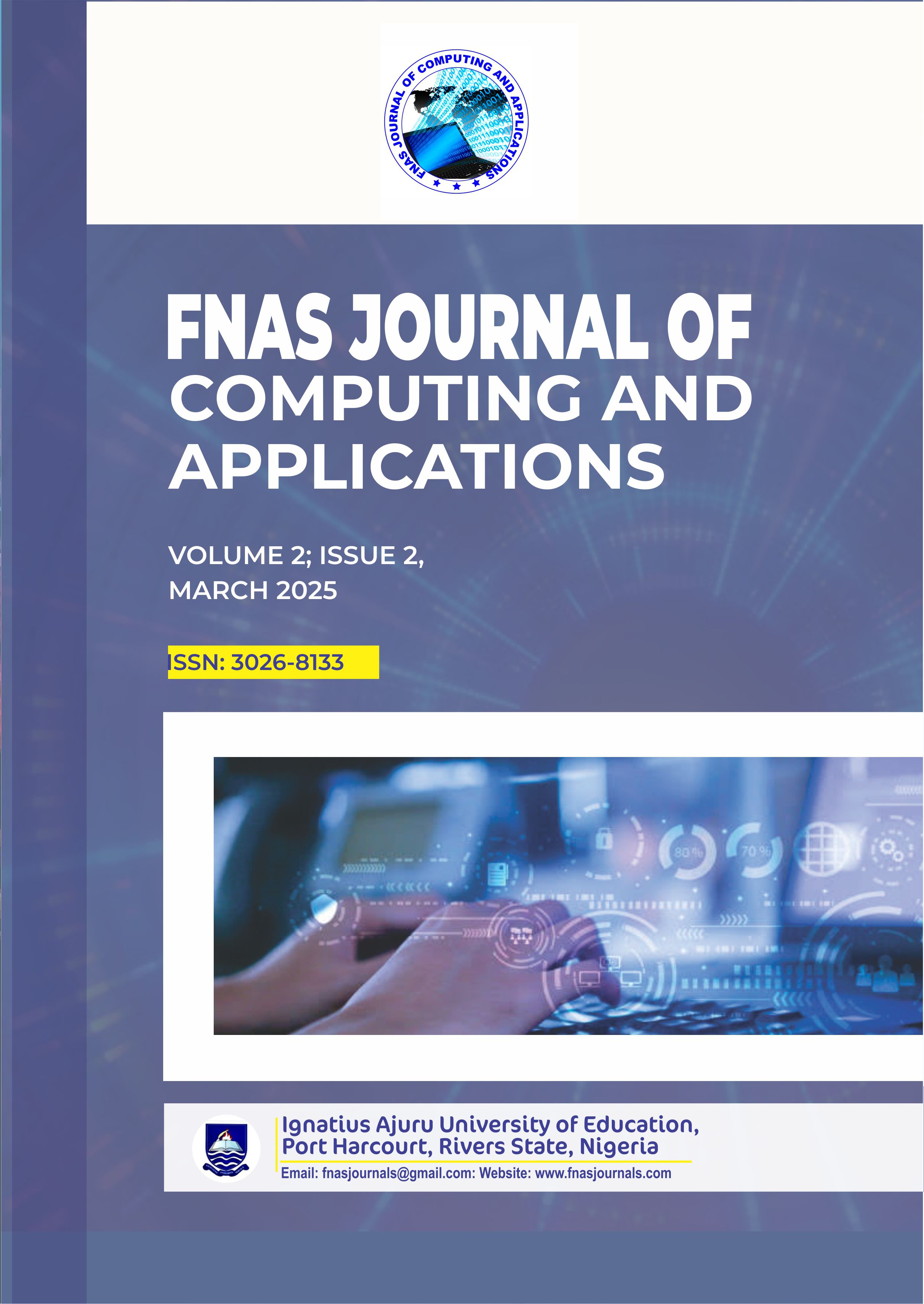Sequence Variability and Functional Analysis of Robo2 Genes in Three Nigerian Indigenous Chicken Strains
Keywords:
Sequence Variability, ROBO2 Genes, Indigenous ChickensAbstract
This study investigated the sequence variability and functional implications of ROBO2 genes (Roundabout Guidance Homolog gene 2), across three strains of Nigerian indigenous chickens: normal feathered, naked Neck, and frizzle feather, were used in the experiment. Nucleotide sequences were retrieved from the National Centre for Biotechnology Information (NCBI) database and subjected to multiple sequence alignment using the COBALT tool. The aligned sequences were then analysed for variability using the MEGA X suite. Conserved regions within the sequences were determined, and phylogenetic relatedness was assessed using Conservation and BLOSUM80 settings. The study provides insights into the genetic diversity and evolutionary relationships of ROBO2 genes among different strains of Nigerian indigenous chickens, shedding light on potential functional implications and genetic conservation efforts in poultry breeding programs. Despite the considerable variability in amino acid sequences, subsequent alignment analysis revealed a high level as well as degree of conservation at the protein level. Using conclusion a clearer understanding of the sequence variability, further analysis using the MEGA X suite was conducted, resulting in a patterned table that highlighted the presence of INDELs and mutations contributing to the observed diversity. This unexpected finding suggests that while the sequences may differ in their constituent amino acids, the overall structure and function of the ROBO2 protein remain highly conserved across species. Therefore, it is recommended that exploration of genotype-phenotype relationships, investigation of genetic variants contributing to environmental adaptability, and consideration of epigenetic modulation in phenotype expression. This multidisciplinary approach aims to enhance understanding of the genetic diversity and adaptive potential of indigenous Nigerian chicken populations.
References
Dana, N., Vander Waaij, E. H., & van Arendonk, J. A. (2011). Genetic and phenotypic parameter estimates for body weights and egg production in Horro chicken of Ethiopia. Tropical animal health and production, 43, 21-28. Dana, N., van der Waaij, L. H., Dessie, T., & Van Arendonk, J. A. M. (2010). Morphological features of indigenous chicken populations of Ethiopia. Animal Genetic Resources/Ressourcesgénétiquesanimales/Recursosgenéticosanimales, 46, 11-23. URL: http://www.fao.org/3/i1281t/i1281t02.pdf Dhawal, M., Jain, S. K., Singh, R., Kumar, A., & Saxena, A. (2020). Breeding and Genetics Strategies for Indigenous Chicken Improvement: An Overview. Journal of Entomology and Zoology Studies, 8(6), 1293-1296.
Dickson, B. J., & Gilestro, G.F. (2006). Regulation of commissural axon pathfinding by slit and its Robo receptors. Annu. Rev. Cell Dev. Biol. 22:651–675. Dunya, A. M., Husa, H., Yusuf, S. Z., Usman, Y., & Makinta, A. A. (2014). Fertility and hatchability in local chicken of Borno state, Nigeria.
Fan, X., Li, Q., Pisarek-Horowitz, A., Rasouly, H. M., Wang, X., Bonegio, R. G., & Lu, W. (2012). Inhibitory effects of Robo2 on nephrin: a crosstalk between positive and negative signals regulating podocyte structure. Cell reports, 2(1), 52-61. Greenberg, J. M., Thompson, F. Y., Brooks, S. K., Shannon, J. M., & Akeson, A. L. (2004). Slit and robo expression in the developing mouse lung. Developmental Dynamics: An Official Publication of the American Association of Anatomists, 230(2), 350-360.
Grepay, N. A. (2009). The main factors affecting poultry production in Libya. Oeconomia, 8: 43-49.
Guan, K. L., & Y. Rao. (2003). Signalling mechanisms mediating neuronal responses to guidance cues. Nat. Rev. Neurosci. 4:941– 956. Halima, H. (2007). Phenotypic and genetic characterization of indigenous chicken populations in northwest Ethiopia. Ph.D. dissertation, University of the Free State, Bloemfontein, South Africa. URL: http://hdl.handle.net/11660/6323
https://www.ebi.ac.uk/jdispatcher/st/emboss_transeq
Hu, J., Li, P., Zhou, J., Zhong, S., Li, J., Zhou, J., & Wang, J. (2017). Genomic analysis of feather color differentiation in Pectoral Sandpiper. Journal of Avian Genetics, 43(3), 387-395. (Page 392)
Lu, Z., Sessler, F., Holroyd, K. J., Helling, S., Conrad, C., Huss, R., & Pöschl, E. (2011). Transcriptional profiling of human bronchial epithelial cell BEAS-2B exposed to diesel and biomass ultrafine particles. BMC Genomics, 12(1), 437.
Malo, D., & E. Skamene. (1994). Genetic control of host resistance to infection. Trends Genet. 10: 365–371.
Moges, F. Aberra, M., & Dessie, T. (2010). Assessment of village chicken production system and evaluation of the productive and reproductive performance of local chicken ecotype in Bure district, North-west Ethiopia.
Mtileni, B. J., Farai C. M., Azwihangwisi, M., Michael C., Groeneveld, E., Weigend S., & Kennedy, D. (2015). Indigenous chicken production in South Africa: A review. Asian Journal of Poultry Science, 9(2): 63-70.
Mtileni, B.J., Muchadeyi, F.C., Maiwashe, A., Groeneveld, E., Groeneveld, L.F., Dzama, K., & Weigend, S. (2020). Genetic diversity and population structure of indigenous chicken from South Africa using SNP markers. Animal Genetics, 51(4), 553-557.
Oluyemi, J.A. & Roberts, F.A. (2007). Poultry Production in the Warm Wet Climates. Spectrum Books Ltd, Ibadan, Nigeria.
Osei-Amponsah, R., Amoah, N.K., & Akankpar, F.M. (2020). Genetic diversity of indigenous chicken populations in Ghana. Journal of Applied Biosciences, 156, 15795-15802. Prasad, A., Paruchuri, V., Preet, A., Latif, F., & Ganju, R. K. (2008). Slit-2 induces a tumor-suppressive effect by regulating β-catenin in breast cancer cells. Journal of Biological Chemistry, 283(39), 26624-26633. Vidal, S., Tremblay, M. L., Govoni, G., Gauthier, S., Sebastiani, G., Malo, D., & Gros, P. (1995). The Ity/Lsh/Bcg locus: natural resistance to infection with intracellular parasites is abrogated by disruption of the Nramp1 gene. The Journal of experimental medicine, 182(3), 655-666.








